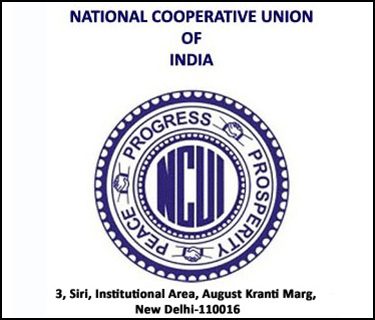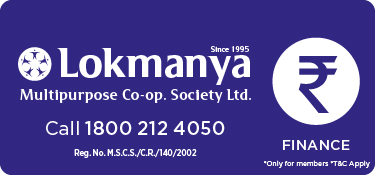By I C Naik
Several people wonder whether the Laws and Bye-laws were the same or there is a difference. Every cooperator must know the distinction between the two and in case of housing societies the committee members must be well versed with registered bye-laws of their housing society. In reality it’s a disaster.
“Society Bye laws are not even laws of land!” This is what I wrote on November 12 , 2015 https://www.indiancooperative.com/cooperative-coffee-shop/society-bye-laws-are-not-even-laws-of-land/ I narrated a few true stories and commented:”In all these true stories one common message was that including even the Dy. Registrar, many seniors are blissfully ignorant of a true character of the bye-laws of cooperative society and the Models recommended by the Commissioner from time to time. In Wikipedia one finds, “A by-law is a rule or law established by an organization or community to regulate itself, as allowed or provided for by some higher authority. The higher authority, generally a legislature or some other government body, establishes the degree of control that the by-laws may exercise”
Laws of land are made by the State Legislatures or by the Parliament. Law making is called “enactment of law” which calls for the prior ascent of the respective State Governor or the President of India. The bye-laws of the society are to be drafted / approved by the prospective members of a proposed housing society, taking in to account the way they want to manage and maintain the joint property they have individually acquired from a builder.
The Builder is a Chief Promoter of the housing society. It is his legal obligation under Section 10(1) of MOFA 1963. In order to go easy on registration of housing society the Chief Promoter gets the latest Model bye-laws approved by the flat purchasers, without really letting them realize that fact. It is advisable for new home buyers to read a series on flaws in Model bye-laws an example is on URL https://www.indiancooperative.com/cooperative-coffee-shop/maha-chs-flawed-bye-laws-of-model-2014-part-6/ The Registering Authorities insist to submit the latest Model bye-laws released by C C and R C S for registration. The Chief Promoter gets an undertaking signed by every flat purchaser that they have read the proposed bye-laws and they have agreed to be bound by the same including any amendment by the Registering Authority in future. In reality hardly they were aware that they have given such undertaking. In almost all cases no one has gone through the bye-laws. The builder has no moral obligation to make sure that the flat purchasers are told as to what they are signing.
The Scheme of making bye-laws of a proposed housing society is laid down in the M C S Act 1960. Homebuyers are not aware of the same. Ten adults (called Promoters of the cooperative society) need to make an application to the Registering Authority for registration of the society filling up a form prescribed under the M C R 1961. The application must accompany the proposed bye-laws of the proposed housing society.
The M C S Act 1960 lays down two lists of the content of the proposed bye-laws around which the bye-laws are to be detailed by the Promoters. One list is for the Registering Authority to pick up and ask the Promoters of the society to draft bye-laws about each of such items. Another list is optional one for the use of promoters to frame bye-laws as they wish. The Promoters have the freedom to describe the bye-laws to suit their group requirements within the broad framework laid down by the State. The M C S Act 1960 directs the Registering Authority to register the proposed cooperative society vide section 9 in these words: “If the Registrar is satisfied that a proposed society has complied with the provisions of this Act and the rules, or any other law for the time being in force, or policy directives issued by the State Government under section 4 and that its proposed by-laws are not contrary to this Act or to the rules, he shall, within two months, from the date of receipt of the application register the society and its by-laws.
Distinction between bye-laws and laws has been candidly brought out by the S C in an earlier judgment in Co-Operative Central Bank Ltd. & … vs Additional Industrial Tribunal, … on 3 April, 1969 [1970 AIR 245, 1970 SCR (1) 206];in these words “if a statute gives power to a Government or other authority to make rules, the rules so framed have the force of statute and are to be deemed to be incorporated as a part of the statute.” When the M C S Act 1960 conferred powers to State Government or the Commissioner for Cooperatives and Registrar of Cooperative Societies (C C and R C S ) or any Authority, to specify any set of bye-laws as their bye-laws ” for such type of societies or class of societies, as he may deem fit” then those bye-laws as per Hon. S C form part of the M C S Act 1960 and the bye-laws become laws of the land.
The 97th Constitutional Amendment intended to give constitutional frame work to the National Cooperative Policy adopted by Government of India in 2002. The Policy inter alia intended that “the regulatory role of the Government will be mainly limited to the conduct of timely elections, audit of the cooperative societies, and measures to safeguard the interest of the members and other stake holders in the cooperatives. There shall, however, be no interference in the management and working of the cooperatives.” In blatant defiance to the above policy, the pioneering State of Maharashtra’s Legislature inserted a proviso to Section 14 (2) empowering the C C and R C S to specify a Model bye-law framed by his staff as the mandatory bye-laws of a class of cooperative society. If this power is exercised those bye-laws will become laws.













































